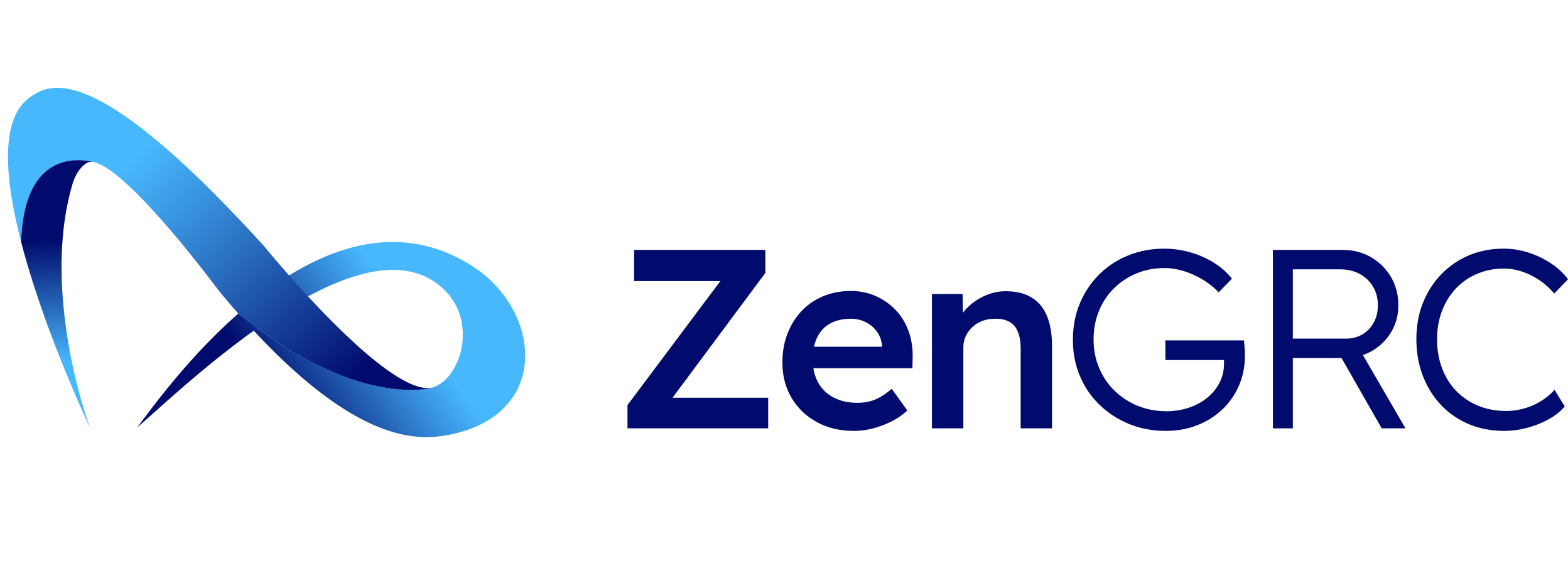
How to Manage Risk With Internal Control Monitoring
Key Takeaway: Internal control monitoring involves ongoing evaluations to determine whether controls operate as intended. The five COSO components—control environment, risk assessment, control activities, information and communication, and monitoring—are used to achieve strategic, operating, compliance, and reporting objectives.
Quick Navigation
- What Is Internal Control Monitoring?
- Five Components of Internal Control
- Why Is Monitoring Important?
- COSO Guidance Application
- Preventive vs Detective Controls
- Monitoring and Auditing Integration
- Tools and Technologies
- Frequently Asked Questions
Key Terms
Internal Control Monitoring: Ongoing evaluations to determine whether internal controls operate as intended and communicate deficiencies for timely corrective action.
Control Environment: The organizational culture and attitude toward internal control that provides discipline, structure, and foundation for all control components.
COSO Framework: Committee of Sponsoring Organizations framework provides guidance for internal control design, implementation, and monitoring across organizations.
Preventive Controls: Controls designed to prevent errors or irregularities from occurring in the first place through built-in system safeguards.
Detective Controls: Controls that identify and detect errors or irregularities after they occur, enabling prompt correction and remediation.
The Foundation of Business Success: Why Internal Control Monitoring Matters
Strong, effective internal controls are crucial for efficient operating environments that drive business growth. Good internal control activities help organizations deliver stakeholder value, achieve strategic objectives, and comply with applicable laws, regulations, and industry best practices.
Experience Signal: Organizations with comprehensive internal control monitoring reduce operational risks by up to 50%, improve compliance outcomes by 40%, and decrease audit findings by 65% compared to those with ad-hoc monitoring approaches.
What Is Internal Control Monitoring?
Internal control monitoring involves organizations and third parties performing ongoing evaluations to determine whether internal controls operate as intended. Monitoring uncovers deficiencies so prompt corrective action can be taken.
This process assures continuous effectiveness of control systems instead of relying solely on periodic assessments. Control monitoring provides real-time insights into performance and enables proactive risk management across organizational functions.
How Does Monitoring Differ from Traditional Control Assessment?
Traditional control assessment is done at specific intervals, and it provides point-in-time snapshots of control effectiveness. Monitoring is continuous oversight and detects control failures immediately, enabling rapid response to emerging risks or control breakdowns.
Monitoring is integrated into daily operations rather than being a separate activity. This approach ensures controls remain effective in dynamic business environments where risks and operations constantly evolve.
Five Components of Internal Control
Internal control has five interrelated components that work together to create comprehensive risk management frameworks.
1. Control Environment
Sets the organizational attitude of management and employees toward internal control. This intangible foundation provides discipline and structure and encompasses ethical commitment and technical competence across all organizational levels.
2. Risk Assessment
The process of identifying and evaluating risks (internal and external) that prevent achievement of objectives. Management decides whether to accept, reduce to acceptable levels, or avoid risks entirely based on assessment results.
3. Control Activities
Manual and automated tasks that assure risk responses are carried out effectively. Activities include policies, procedures, authorization, approval, verification, asset security, and segregation of duties across organizational functions.
4. Information and Communication
Systems that capture and exchange risk information within the organization and with external parties. Critical information must be communicated in a timely and accurate manner to support decision-making.
5. Monitoring
Evaluating internal control effectiveness over specific time periods to assure continued operation. Effective monitoring identifies and corrects control weaknesses before they can materially affect achievement of objectives.
Why Is Monitoring Internal Controls Important?
Monitoring internal controls helps organizations achieve strategic, operating, compliance, and reporting objectives. When designed and implemented accurately, monitoring enables organizations to operate more effectively while reducing risks.
Key Benefits of Internal Control Monitoring
- Operational Protection: Safeguard effectiveness and efficiency of operations through continuous oversight and early problem detection
- Timely Problem Resolution: Identify and correct internal control problems promptly before they escalate into significant issues
- Financial Reporting Reliability: Support preparation of reliable and accurate financial statements through systematic control verification
- Regulatory Compliance: Maintain compliance with applicable laws and regulations through continuous monitoring and adjustment
- Leadership Peace of Mind: Provide leadership teams confidence that operations function as intended without requiring constant oversight
How Does Monitoring Support Organizational Objectives?
Monitoring creates feedback loops that enable continuous improvement of control systems. By identifying trends, patterns, and emerging risks, organizations can adapt their control frameworks to changing business environments and regulatory requirements.
Effective monitoring reduces the cost of compliance by preventing issues rather than fixing them after they occur. This proactive approach minimizes disruption to business operations, while maintaining regulatory adherence and stakeholder confidence.
How to Apply COSO Guidance to Internal Control Monitoring
COSO’s Fundamental Monitoring Principles:
“Ongoing and/or separate evaluations enable management to determine whether other internal control components continue functioning over time, and internal control deficiencies are identified and communicated timely to responsible parties and management.”
To apply these principles effectively, organizations need to implement three elements to create comprehensive internal control review systems:
1. Establish Foundation for Monitoring
Create a control-conscious culture at the top of the organization with effective structures. Monitoring roles are assigned to people with appropriate capabilities, objectivity, and authority. This foundation enables ongoing monitoring and effective evaluations.
2. Design and Execute Monitoring Procedures
Focus procedures on obtaining persuasive information about key control operations that address critical risks to organizational objectives. Procedures should be systematic, documented, and consistently applied.
3. Assess and Report Results
Carefully evaluate identified deficiencies and report monitoring results to appropriate authorities and boards for timely action and follow-up. Include severity assessments and recommended corrective actions.
Actionable Tips for Implementing Internal Control Monitoring
- Comprehensive Risk Assessment: Assess potential risks to the organization’s ability to achieve its business objectives through monitoring activities or formal risk assessments.
- Control Identification and Modification: Identify new controls or modify existing activities to mitigate identified risks effectively.
- Change Communication: Design and communicate control changes to personnel responsible for implementing, carrying out, and reviewing related activities.
- Effective Implementation: Implement control changes systematically and document all modifications for future reference and audits.
- Continuous Monitoring: Monitor organizational control activities to determine operational effectiveness and execution outcomes regularly.
Preventive vs Detective Controls
Internal controls can be categorized as either preventive or detective. Each serves a different purposes in comprehensive control frameworks.
| Control Type | Purpose | Timing | Cost | Examples |
| Preventive Controls | Prevent errors or irregularities from occurring | Before problems occur | High initial investment, low ongoing costs | Access controls, authorization requirements, segregation of duties |
| Detective Controls | Detect errors and irregularities after occurrence | After problems occur | Lower initial cost, higher ongoing expenses | Reconciliations, reviews, exception reports, audits |
How Do Organizations Balance Preventive and Detective Controls?
Effective control systems combine preventive and detective controls to create layered protection. Preventive controls serve as the first line of defense, while detective controls provide backup identification and correction capabilities when preventive measures fail.
The optimal balance depends on risk tolerance, cost considerations, and operational requirements. High-risk areas typically require stronger preventive controls, while detective controls provide cost-effective monitoring for lower-risk processes.
How Internal Control Monitoring and Auditing Work Together
Three Lines Model Integration
Internal controls reside in the First and Second lines (operating units and management functions like finance), while internal audit operates in the Third Line, assessing effectiveness of both defense lines.
Line Responsibilities
- First Line: Operational management functions with embedded controls
- Second Line: Risk and compliance management functions providing oversight
- Third Line: Internal audit providing independent assurance on first and second line effectiveness
Relationship Between Monitoring and Auditing
Internal audit should report directly to boards of directors, specifically to audit committees, to maintain independence and objectivity when evaluating other company functions. This structure supports unbiased assessment of control effectiveness.
Together, internal audit and internal control provide reasonable assurance that established objectives and goals are met efficiently. Both should exist in some form in every organization, regardless of size and complexity, working complementarily rather than redundantly.
Tools Supporting Internal Control Monitoring
Various tool categories make internal control monitoring thorough, effective, and seamless.
Communication and Collaboration Tools: Set up audit trails and documentation through email, instant messaging, webcast conferences, and virtual teamwork spaces enabling distributed monitoring activities.
Security-Focused Analysis Tools: Provide detailed analyses for segregation of duties, antivirus protection, intrusion detection, encryption, and firewall implementation across organizational systems.
Regulatory and Technical Reference Tools: Supply accurate and up-to-date regulatory information concerning organizational compliance requirements and industry best practices.
Document Management and Workflow Tools: Monitor workflows and processes to make them more event-driven and simpler to manage while maintaining comprehensive documentation.
Data Mining and Business Intelligence Tools: Collect data from multiple systems, organizing and analyzing information for pattern recognition and trend identification in control performance.
Business Performance Management Tools: Provide management with real-time, enterprise-wide data supporting continuous monitoring and immediate response to control issues.
Frequently Asked Questions
How often should internal control monitoring be performed? Internal control monitoring should be continuous for critical processes, with formal evaluations conducted at least quarterly. High-risk areas may require daily or weekly monitoring, while lower-risk processes can be monitored monthly or quarterly based on risk assessment results.
Who should be responsible for internal control monitoring? Internal control monitoring is primarily a management responsibility, and it typically involves process owners, risk managers, and compliance officers. Independent monitoring may also be performed by internal audit, but operational monitoring should be embedded within business processes and performed by those responsible for the controls.
What are the key indicators that internal controls are not working effectively? Key indicators include repeated operational errors, unexplained variances, missed deadlines, regulatory violations, customer complaints, unusual transaction patterns, employee concerns, and audit findings. Trends in these indicators often signal underlying control weaknesses that require attention.
How can small organizations implement effective internal control monitoring? Small organizations can implement effective monitoring through simple procedures like management reviews, exception reports, reconciliations, and segregation of duties, where possible. Focus on high-risk areas first and use technology solutions to automate monitoring where cost-effective.
What is the difference between monitoring and testing internal controls? Monitoring is ongoing evaluation of control effectiveness during normal operations. Testing involves specific procedures to assess whether controls are operating as designed at a point in time. Monitoring is continuous; testing is typically periodic and more structured.
How does technology enhance internal control monitoring? Technology enhances monitoring through automated exception reporting, real-time data analysis, workflow management, continuous data monitoring, and integrated dashboards. It enables more frequent, comprehensive, and cost-effective monitoring, while reducing manual effort and human error.
From Periodic to Continuous: Transforming Your Control Monitoring Strategy
ZenGRC simplifies and improves the accuracy of risk management processes, which helps support internal controls. Organizations can use it to regularly monitor internal control effectiveness and expose and eliminate internal control weaknesses.
The advanced GRC platform provides real-time visibility into control performance, automated workflow management, and integrated risk assessment capabilities. It’s a modern solution that enables continuous monitoring rather than periodic assessments to assure that controls remain effective in dynamic business environments.
Transform your internal control monitoring from manual, periodic activities into automated, continuous oversight that provides immediate insights and enables proactive risk management across your organization.
Are you ready to enhance your internal control monitoring with automated, real-time oversight and comprehensive risk management? Schedule a demo.
